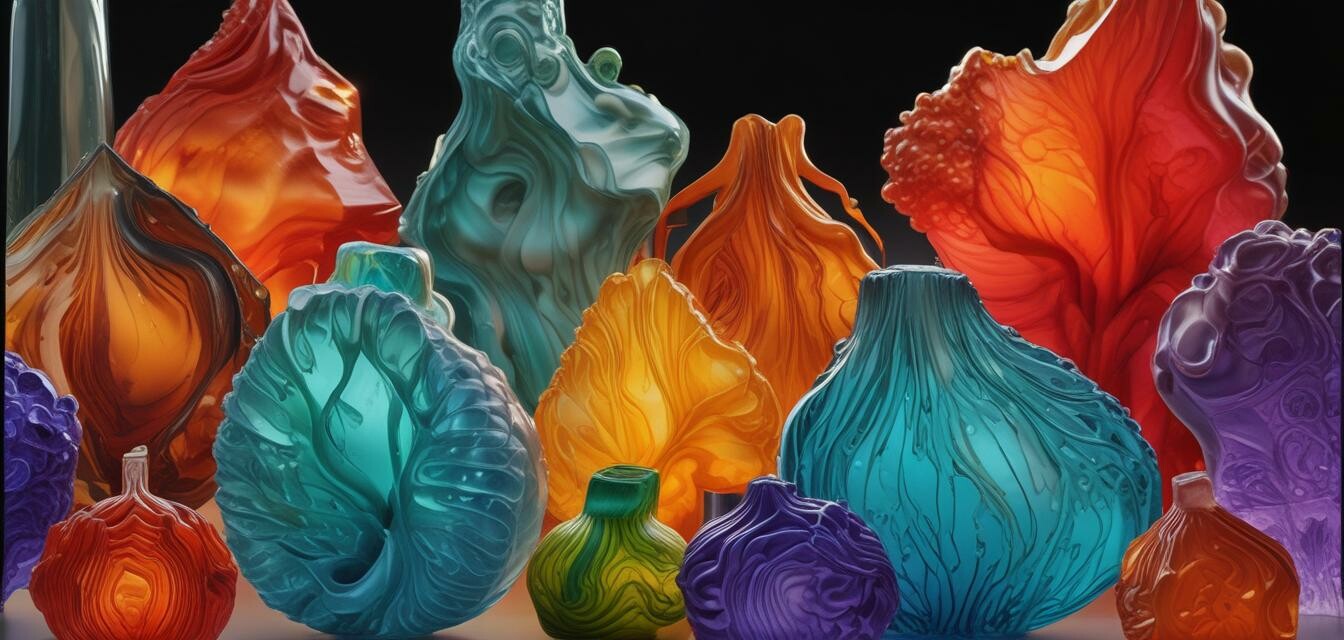
Experimenting with Hybrid Glass Molds
Key Takeaways
- Hybrid glass molds combine different materials to create unique textures and designs.
- This innovative approach enhances the creative possibilities for glass artists.
- 2025 is set to see a rise in hybrid glass molds, transforming traditional glass art.
- Experimenting with these molds can lead to exciting new projects and artistic expressions.
- Understanding the variety of molds available can enrich your craft and inspire creativity.
In the ever-evolving world of glass art, creativity knows no bounds. For 2025, artists are pushing the envelope with innovative materials and techniques. One of the most exciting developments in glass making is the introduction of hybrid glass molds. These molds are unique as they blend different materials, offering unparalleled textural effects and designs.
What are hybrid glass molds?
Hybrid glass molds are designed to combine various materials such as silicone, metal, and glass itself to create complex dimensional effects. The result is a product that not only exhibits the beauty of glass but also incorporates unique textures and patterns that cannot be achieved with traditional glass molds.
Benefits of hybrid glass molds
- Enhanced creativity: Artists can explore new shapes and textures.
- Durability: Hybrid molds often offer added strength compared to traditional molds.
- Versatility: Ideal for various glass-making techniques including fusing, casting, and slumping.
How to Experiment with Hybrid Glass Molds
Getting started with hybrid glass molds opens a realm of artistic possibilities. Here are some steps to effectively utilize these molds in your craft:
Step-by-step guide
- Understand the materials used in the hybrid mold.
- Prepare your workspace ensuring all safety precautions are in place.
- Select the glass type that best complements your design.
- Follow the instructions provided with your mold for optimal results.
- Experiment with different layers or colors in your glass pieces.
- Test and refine your techniques based on the outcomes.
Types of Hybrid Glass Molds
| Type of Mold | Material Components | Typical Use |
|---|---|---|
| Silicone + Glass | Silicone rubbers with glass fragments | Fusing and casting with added texture |
| Metal + Glass | Metal frames with glass inlays | Creating dimensional pieces |
| Composite Mold | Mixed materials like clay and resin with glass | Innovative shapes and art installations |
Considerations When Choosing Hybrid Molds
When selecting hybrid glass molds, consider the following:
- Compatibility: Ensure that your glass and the mold materials are compatible.
- End Use: Think about what final piece you want to create.
- Heat Resistance: Check each material’s heat tolerance to avoid damage.
Inspiring Project Ideas Using Hybrid Glass Molds
Here are some creative projects you can try with hybrid glass molds:
- Vibrant wall art using layered glass in silicone molds.
- Textured bowls created with metal molds.
- Custom jewelry pieces that incorporate both casting and fusing techniques.
Conclusion
Experimenting with hybrid glass molds not only enhances the creative possibilities for artists but also leads to unique and stunning glass pieces. As we move into 2025, taking the plunge into this innovative aspect of glass art can yield incredible results. Don't hesitate to explore our discounted glass molds and other glass supplies to fuel your creativity.
Tips for Beginners
- Start with simple designs before diving into complex projects.
- Keep a journal of your experiments to track what works and what doesn’t.
- Seek out online communities to share your work and get feedback.
Pros
- Creates outstanding textures and designs.
- Offers versatility and strength.
- Encourages experimentation and innovation.
Cons
- Can be more expensive than traditional molds.
- Requires some trial and error to master.
For more insights on glass making techniques and tools, check our dedicated sections on glass kilns and glass sheets and supplies.

